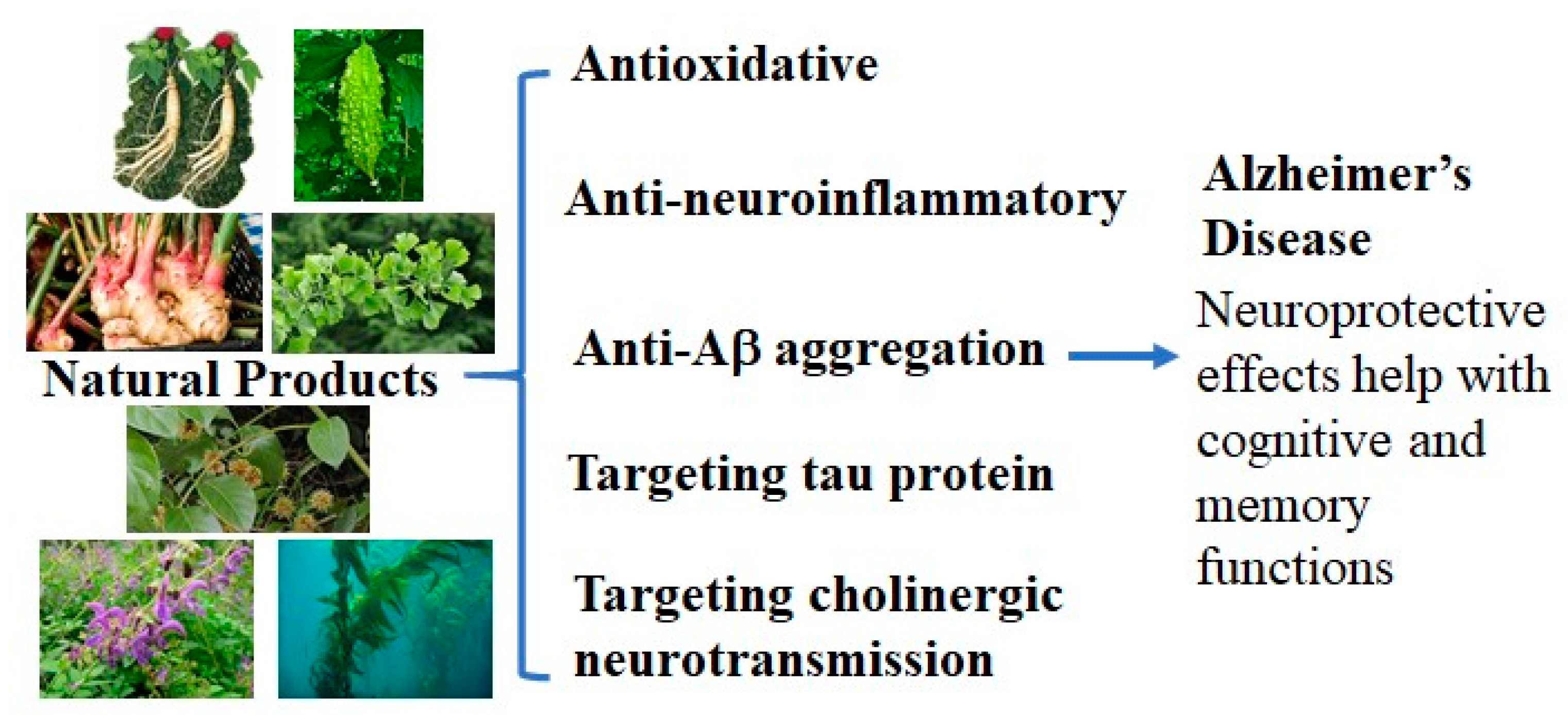1000/1000
Hot
Most Recent

| Version | Summary | Created by | Modification | Content Size | Created at | Operation |
|---|---|---|---|---|---|---|
| 1 | Xin Chen | + 953 word(s) | 953 | 2021-06-01 09:57:49 | | | |
| 2 | Vicky Zhou | Meta information modification | 953 | 2021-06-09 03:28:27 | | |
Neuroprotective natural products, for exmaple, the cholinesterase inhibitor galantamine, have effects on neurovegetative diseases. Rivastigmine is also a semi-synthetic derivative of a natural product called physostigmine. Mixtures or extracts of natural products might have advantages compared to individual natural compounds, as they have multiple simultaneous target approaches, which could be a novel treatment option for Alzheimer’s disease (AD), considering the complexity of its pathophysiology. Mounting evidence has suggested that herbs or herbal formulations, together with mixtures obtained from other natural sources, may provide cognitive benefits to AD patients. Consequently, various natural sources and their extracts are extensively employed in animal models and AD patients.
 Figure 1. Neuroprotective effects from natural products for AD.
Figure 1. Neuroprotective effects from natural products for AD.